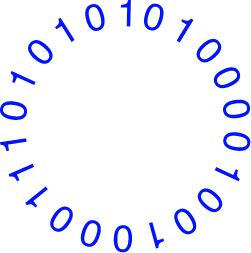People Still Do Most of the Work in Factories
People assume that robots do most of the work in manufacturing and factories and they assume that there will be a wave of AI, automation and robotics where they will lose their job. However, Drishti CEO Prasad Akella reveals a different situation.
The real numbers are that 72% of tasks in a factory are not automated. There are almost no robots involved in making smartphones like the iPhone. Foxconn builds all of the iPhones and iPads and their CEO stated the goal of using mostly robots to build smartphones and tablets but they massively missed their goals of a million robots. In 2011, they said they would have a million robots by 2016 but instead they had 40,000 robots.
Automobile factories only have heavy use of robots in the paint shop and body shop but general assembly is where most humans are still working. There are 300-400 robots in the most automated car factory production line and thousands of people.
Overall there are 1.7 million robots working alongside the world’s 345 million factory workers, according to estimates from the International Federation of Robotics and Goldman Sachs.
Finally Going Beyond the Analysis of Human Work that Henry Ford Used 100 Years Ago
Production and performance data is readily available on-demand from robots on the manufacturing floor. However, the methodology for collecting human statistics is the time and motion studies from 100 years ago used by analysts working for Henry Ford.
Using AI to analyze information from video cameras there can be insight and improvement of 72% of what is done in factories. 68% of production defects are caused by human error. Better data, Akella said, could increase productivity, improve what is considered a reasonable standard of production quality, and prevent small errors from leading to large-scale product recalls.
Getting Granular and Systematic About Human Processes
Currently, analysts take apart their own and competitor’s cars to analyze the final quality and find ways to improve how cars are built.
Sandy Munro is famous for his teardown analysis of the Tesla Model 3.
Drishti is offering teardowns and constant monitoring and analysis of the processes in factories.
Akella is an expert in collaborative robots (cobots). Akella led the General Motors team that created them in the 1990s and he founded Drishti in 2016 to use A.I. and data analytics in coordination with factory workers.
Action Recognition
Drishti has built a new deep learning architecture that uniquely parses streams of video to generate real-time analytics on highly variable human actions.
Put simply, Drishti can recognize activities being performed as the operator performs them, even if Drishti has never observed that operator before.
Drishti is the only company in the world commercializing action recognition specifically for manufacturing, and one of the very few working with the technology in any industry.
Action recognition is just part of the solution. Drishti’s vertically integrated manufacturing solution extends end-to-end: from capturing video to creating data to providing applications, data services and workflow support for line operators, supervisors, engineers and more.
Factory operators can get started with Drishti without disrupting your assembly lines or interfering with your existing processes. There are no heavy IT integrations and very little equipment to install. As long as the cameras have a clear view of a process, and as long as the cameras can stream data, then you can deploy Drishti.
Drishti Status
Drishti has already raised a successful series A funding round and is working with major customers who are global leaders in manufacturing.
Potential for Trillions of Dollars in Global Impact
Manufacturing is $12 trillion of the $80 trillion global economy. Discrete Manufacturing is $7.2 trillion (60% of $12T). If the mostly manual processes can be made 20% more efficient then this would be more than a $1 trillion boost to the world economy.
There is also process manufacturing. Process manufacturing follows a sequential model and sometimes creates materials, such as steel, used in finished products.
Discrete manufacturing follows an asynchronous model and constructs a finished product, like a smartphone.
Why Will Many Jobs Remain Safe from Automation?
The dexterity needed for fine assembly work is still vastly superior in people. Robots cannot deal with floppy wires. Elon Musk and Tesla want to get to wireless communication within car engines and around a car. They will make great leaps reducing the wiring but getting to zero wires is still a huge leap. The wireless transmission of high-levels of power is an issue. These solutions are not about making the robots better but designing out areas that are hard for robots to handle. This only makes sense of the new design is better in terms of performance and features.
Humans are also faster and cheaper to adapt to change. Factories and products have a lot of change and variation. There is also change and variation in service and other work.
SOURCES- Interview with Prasad Akella, Drishti
Written By Brian Wang, Nextbigfuture.com
To view the original article, please click here.
